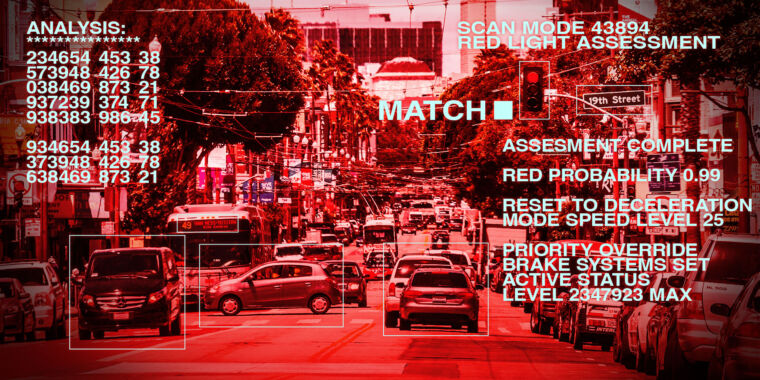Core Concepts
Self-driving cars are not flawless, but the critical question is whether they are safer than human-driven vehicles, a matter that remains uncertain according to recent developments and data analysis.
Abstract
In August, driverless taxis faced scrutiny in San Francisco following serious crashes involving Cruise vehicles. Despite flaws in self-driving technology, the pivotal issue revolves around their safety compared to human drivers. Waymo and Cruise have reported 102 crashes over 6 million miles of driving, with most incidents attributed to other drivers. Notably, Waymo's safety record appears more impressive than Cruise's, indicating potential advancements in autonomous vehicle technology. The debate continues on whether self-driving cars can surpass human driving standards for enhanced road safety.
Are self-driving cars already safer than human drivers?
Stats
Waymo and Cruise have driven a combined total of 8 million driverless miles.
One crash occurred for every 60,000 miles driven by these companies.
Waymo experienced low-speed collisions primarily caused by other drivers.
Cruise reported 36 crashes during its first million driverless miles.
Over two million miles of operation, no Waymo AVs were hit by red-light runners or stop sign violators.
Quotes
"We don't know yet whether it's safer than a human driver." - Cade Metz
"Waymo has invested more time and resources into its technology." - Author
Key Insights Distilled From
by Timothy B. L... at arstechnica.com 09-01-2023
https://arstechnica.com/cars/2023/09/are-self-driving-cars-already-safer-than-human-drivers/
Deeper Inquiries
How can policymakers balance the need for real-world testing of self-driving cars with ensuring public safety?
Policymakers face a challenging task in balancing the necessity for real-world testing of self-driving cars with ensuring public safety. On one hand, allowing companies like Waymo and Cruise to test their autonomous vehicles on public roads is crucial for advancing the technology and improving its safety features. Real-world testing provides invaluable data and insights that cannot be replicated in controlled environments. However, this must be done cautiously to prevent potential risks to public safety.
To strike this balance, policymakers should implement stringent regulations and oversight mechanisms governing the testing of self-driving cars. This includes setting clear guidelines on where, when, and how autonomous vehicles can operate on public roads. Additionally, regular monitoring and evaluation of these vehicles' performance through comprehensive reporting requirements are essential. By mandating transparent reporting of all incidents and crashes involving self-driving cars, policymakers can ensure accountability while also fostering trust among the general public.
Furthermore, collaboration between government agencies, industry stakeholders, researchers, and advocacy groups is vital in developing robust regulatory frameworks that prioritize both innovation and safety. Policymakers should engage in ongoing dialogue with experts to stay informed about the latest advancements in autonomous vehicle technology and adjust regulations accordingly.
Ultimately, by implementing a balanced approach that promotes innovation while prioritizing public safety through rigorous oversight measures, policymakers can navigate the complexities of real-world testing for self-driving cars effectively.
What implications does transparency of self-driving companies' safety records have on public trust and regulatory decisions?
The transparency of self-driving companies' safety records plays a significant role in shaping public trust towards autonomous vehicle technology as well as influencing regulatory decisions at various levels. When companies like Waymo or Cruise provide detailed information about their performance metrics including crash reports, incident analyses, near-misses data etc., it enhances transparency which fosters credibility among consumers regarding the reliability and safety standards maintained by these companies.
Public access to such information allows individuals to make more informed decisions about embracing or accepting autonomous vehicles as part of their daily lives. It also enables regulators to assess whether these companies are complying with existing laws or if additional safeguards are necessary to protect public welfare.
Moreover, transparent disclosure of safety records encourages healthy competition within the industry as companies strive to demonstrate superior performance metrics compared to their peers. This not only drives continuous improvement but also sets benchmarks for best practices across the sector.
From a regulatory perspective, access to comprehensive data from self-driving firms empowers lawmakers to enact evidence-based policies that promote responsible deployment while mitigating potential risks associated with autonomous driving technologies. Transparency ensures accountability within the industry which is essential for building confidence among stakeholders including legislators who rely on accurate information when making critical decisions related to roadworthiness standards or operational protocols for driverless vehicles.
How might intersection behavior differences between Waymo & Cruise reflect broader challenges in AV development?
The disparities in intersection behavior between Waymo & Cruise could mirror broader challenges faced by developers working on Autonomous Vehicle (AV) technologies today.
1- Complexity Handling: Intersections present intricate scenarios requiring quick decision-making based on multiple variables such as traffic signals,
pedestrian movements etc.
2- Predictive Capabilities: AVs must accurately anticipate actions taken by other road users (e.g., running red lights) which demands advanced predictive algorithms.
3- Regulatory Compliance: Strict adherence
to traffic rules at intersections underscores legal compliance aspects crucial for AV operations.
4- Safety Prioritization: Differences may highlight varying approaches towards prioritizing conservative driving strategies aimed at enhancing overall road-safety.
5- Environmental Adaptability: Challenges arise due
to diverse environmental conditions affecting sensor accuracy & system response times during intersection navigation.
6- Human Interaction Dynamics:
Interactions with human-driven vehicles necessitate nuanced communication methods (e.g., signaling intentions) posing unique technical hurdles
Addressing these intersection-specific issues requires holistic solutions encompassing AI algorithm refinement,
sensor enhancement,
real-time processing optimization &
extensive scenario-based simulations/testing regimes tailored specifically toward complex urban driving environments where intersections play pivotal roles.
0
